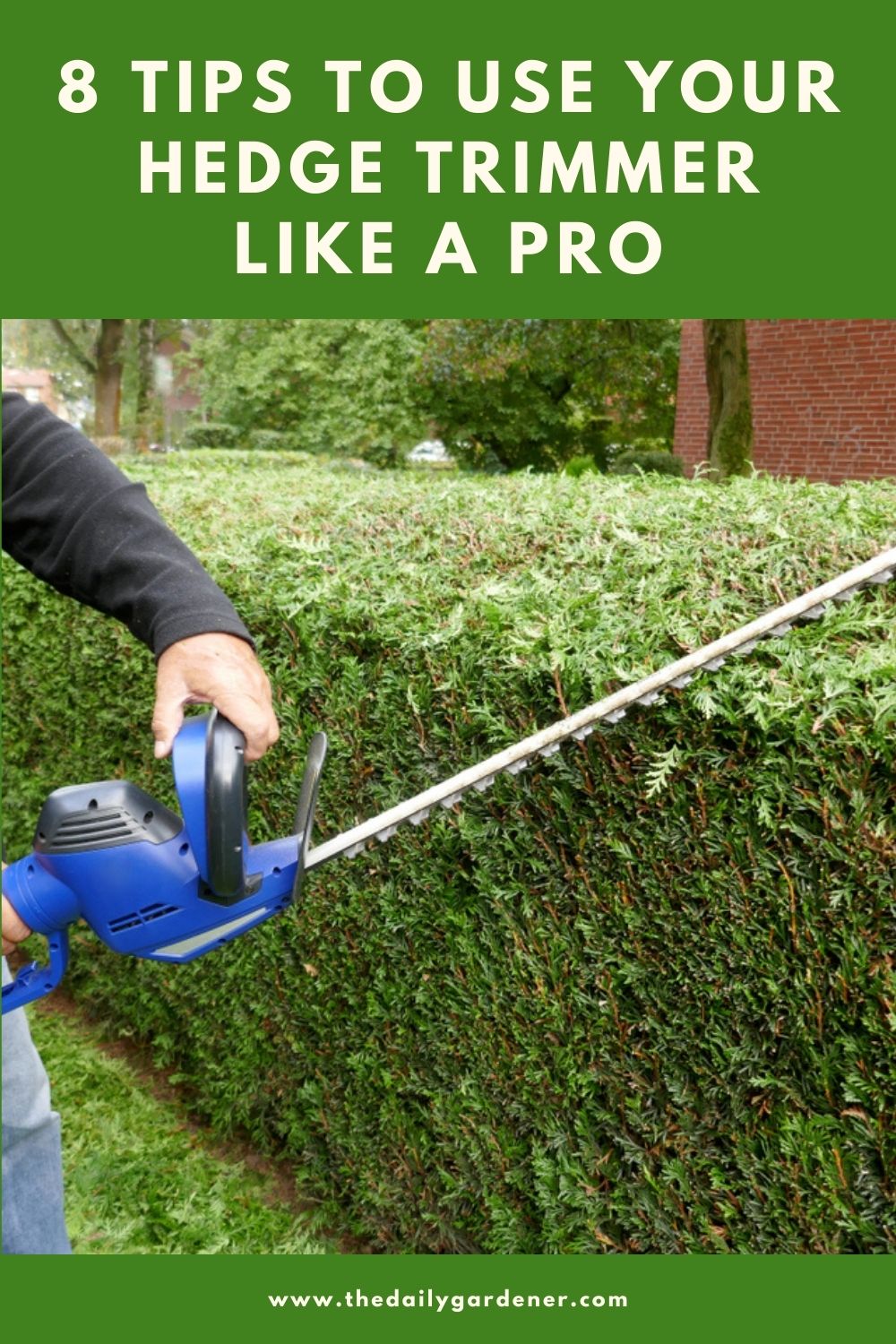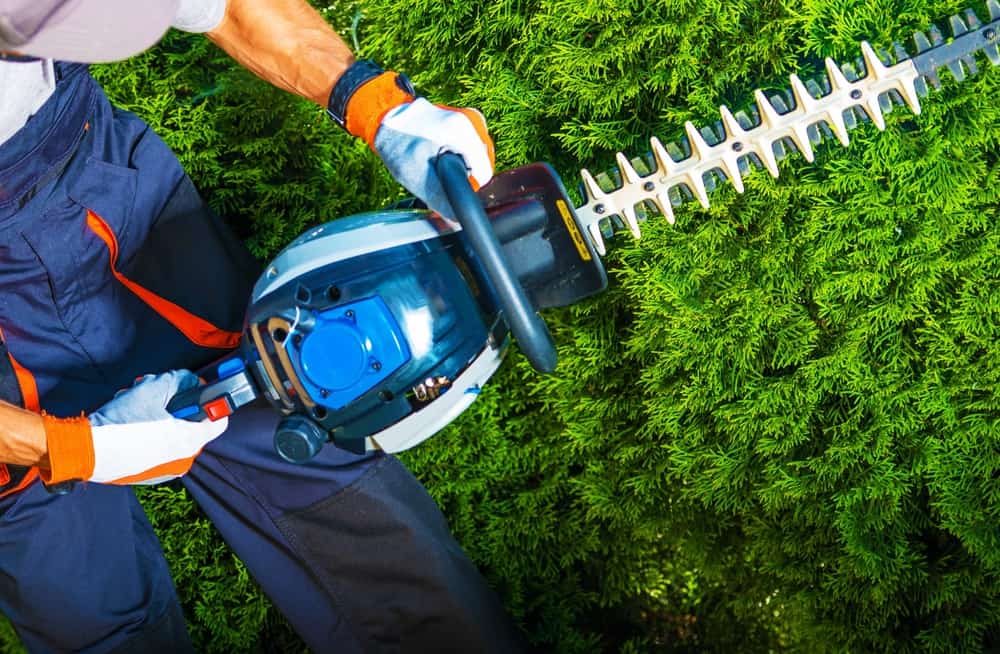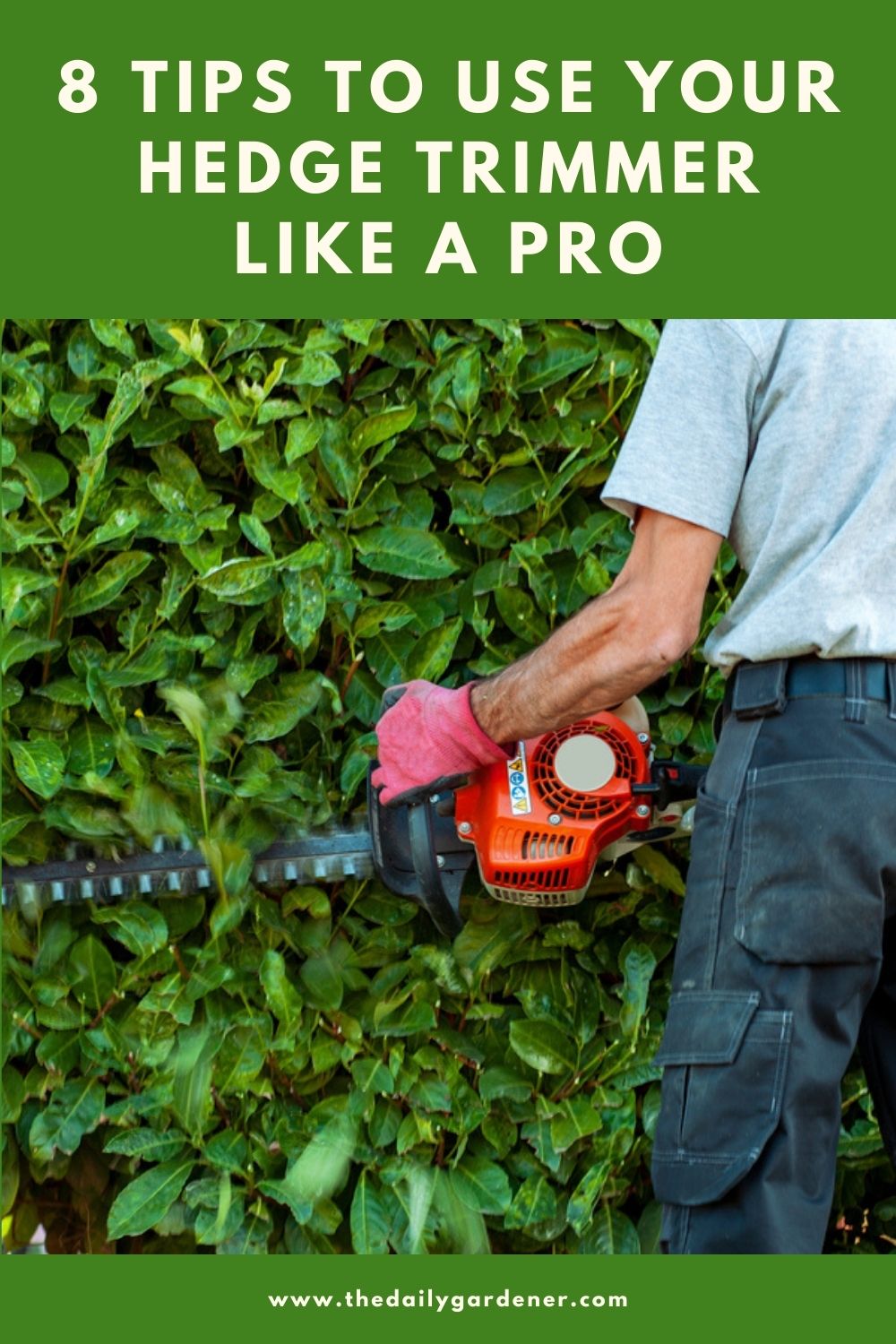There are many things you have to take care of in your yard. Flowers and plants need to be watered, dangerously low branches of trees need to be cut, and hedges have to be constantly reshaped and trimmed.
Hedge trimmers were made for this very purpose. They can properly aid you in transforming the shape of your hedge into something sophisticated and intriguing. There are multiple types of trimmers you’ll come across; an electric hedge trimmer, and battery-powered hedge trimmer, a pole hedge trimmer, and a gas hedge trimmer.
All of these trimmers still serve the same purpose, to trim your hedges, but there are different ways of maintaining them and appropriate ways of using them.
Table of Contents
8 Basics Tips
There are basic guidelines to follow before you pick up and use any hedge trimmer. Following these can keep you safe and make your job much easier.
- Evaluate the shape of your hedge before trimming. Ideally, it should slope inwards at the top. This ensures that the base of the hedge has enough growth to support the hedge.
- Prepare the groundwork before you start. This means laying a tarpaulin on the ground for protection and catching the trimmings. Move it along as you proceed with the trimming.
- Lubricate the trimmer. Trimmers operate by the blades’ close action similar to a manner like scissors. That is why you should lubricate the machine prior to every use. Working with spray oil, grease the blade from top to bottom on either side of the blade. Make sure to have proper safety gear on while doing so.
- You always want to hold the blade of the trimmer away from you. Whether the trimmer is off, or you are turning it off. And even while you are using it, there should never be a situation where you have the blade positioned towards you. You should place yourself directly behind the trimmer blade as this is the safest position for you to be in.
- It’s always better if you work with a slow, steady movement around the hedge. You start from the bottom of the hedge and work your way up. Never try to push your way through any bushes, this can harm either you or the hedge trimmer.
- For trimming newer growthgo smoothly over the hedge with a straight motion. If the growth is thicker and older, then you can use a sawing action to trim through these branches and thistles. If you need help to figure out where to trim for a perfect, straight hedge, then weave a string along the branches and leaves, creating a guideline for yourself on where you need to cut.
- Clear away hedge trimmings. When your tarpaulin fills up, drag it to your compost heap. You can also bundle it up and place inside a wheelbarrow for disposal.
- Always give your trimmer periodic breaks in between work. This helps to avoid overheating the motor.
These tips are basics when it comes to handling any type of trimmer, but there are different types of trimmers. Each of these trimmer types needs their own methods of maintenance in order to get them working. For some more tips about the basics of using hedge trimmers, you can view this video.
Electric Hedge Trimmers Using Tips
Electric hedge trimmers are corded trimmers. They are connected to an outlet in order to draw energy as a power source. This allows you to have an infinite source of power, but a trailing wire limiting your reach as well.
When it comes to electric hedge trimmers, there are some things you want to look out for before you start trimming.
- For starters, you’re going to have a trailing wire behind you, it’s unavoidable. You want to make sure that the cord is far away from the blade of the trimmer to avoid any shocking accidents. Have the cord behind you at all times and as long as you keep yourself behind the cord, you should be fine.
- Secondly, there’s the limitation of how far you can walk with the cord. If you pull too far away, the plug might come out and sputter the life out of your trimmer. Before you even plug the trimmer, check how long the cord can reach around your yard comfortably. If it doesn’t cover all the space you want, get an extension cord.
- As soon as you’re done, turn off the trimmer and unplug it. You don’t want someone accidentally turning on the trimmer when it’s still plugged in.
Gas Hedge Trimmers Using Tips
Gas hedge trimmers are the strongest of all and require the most maintenance. You have to know whether or not you require a gas/oil mixture, any specific fuel, or simply gas to fuel this machine.
There aren’t many ground rules to establish when it comes to gas hedge trimmers. Once you understand the fuel system, you’re good to go. There aren’t any cords keeping you rooted to your spot and it’s a very strong tool.
One thing to keep in mind though is the freshness of the fuel. You don’t let gas sit in the gas tank. It’s always better to not have anything left in your gas tank at the end of the job. Leaving it there can create layers of old fuel, oil, and gas, which spoil and clog the machine.
Cordless Hedge Trimmers Using Tips
These hedge trimmers are powered by batteries. This seems to be a bright solution since it both does not require a cord nor does it emit any toxic fumes.
But there are some downfalls to these trimmers. The batteries don’t last as long as gas hedge trimmers do, and they tend to have less power than gas and corded hedge trimmers.
- Always start working with your hedge trimmer only when it’s fully charged. Don’t use a battery that is half-charged. Don’t leave your battery in the machine when you’re done. This can ruin the battery. As soon as you’re done with the battery, put it on the charge.
- There’s another issue you want to evade, and that is leaving the battery on charging for too long. As soon as you know the battery is charged, take it off of the charger and store it somewhere where cool and dry.
Pole Hedge Trimmers Using Tips
Pole hedge trimmers aren’t entirely different from the formerly mentioned hedge trimmers. The pole part of the trimmer can be found as an extension for all of the different types.
Pole hedge trimmers were made to reach higher spots on larger hedges and bushes. You could even trim the ends of a tree if you have a pole trimmer. Once they are applied to your regular hedge trimmer, they will weigh more and your balance will be key to holding it upright.
Since the hedge trimmer will now be over your head, it’s better to have safety goggles and protective gear over your face in case any debris or branches fall over you.
Don’t forget to pin it!










